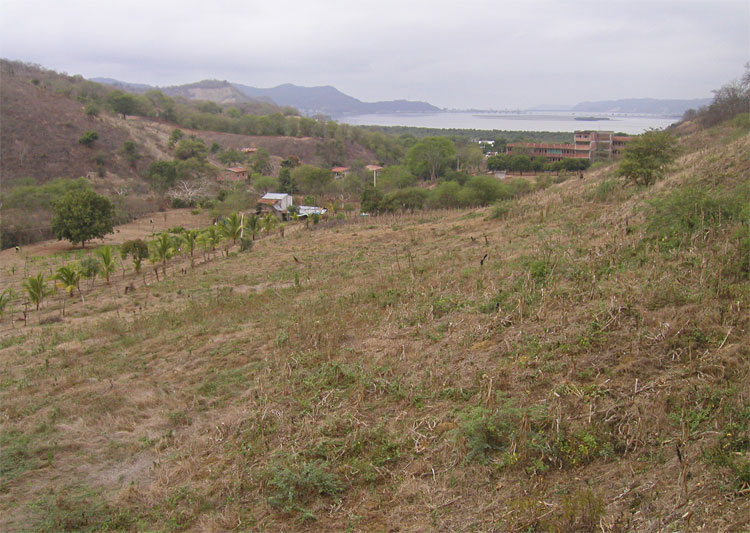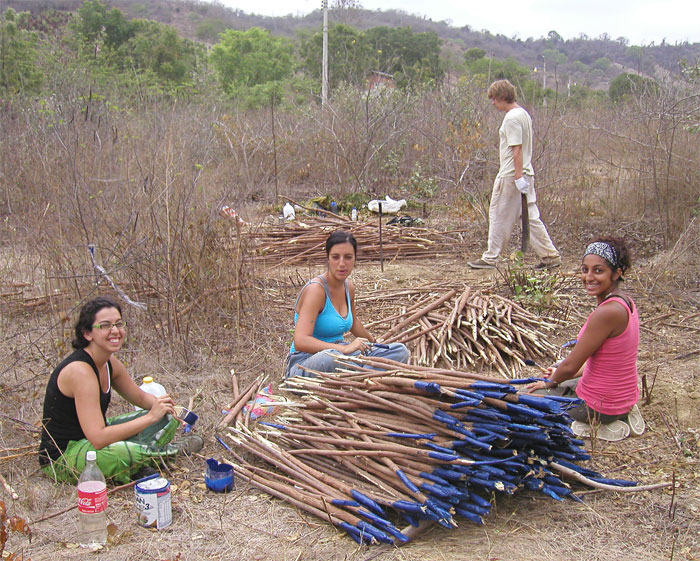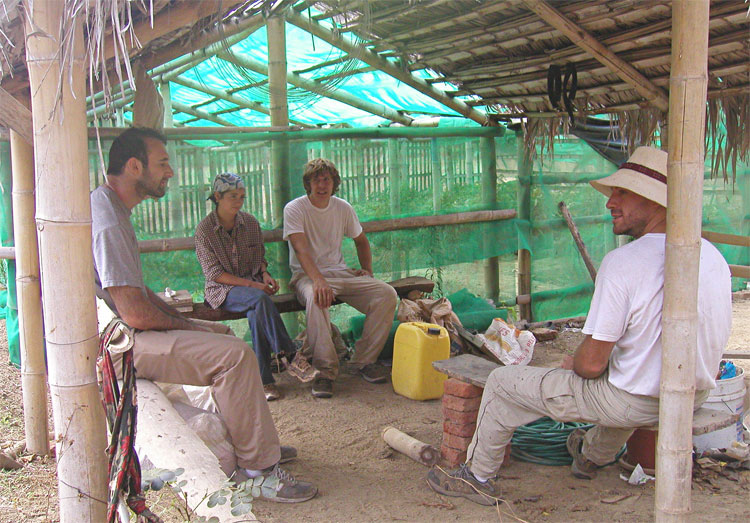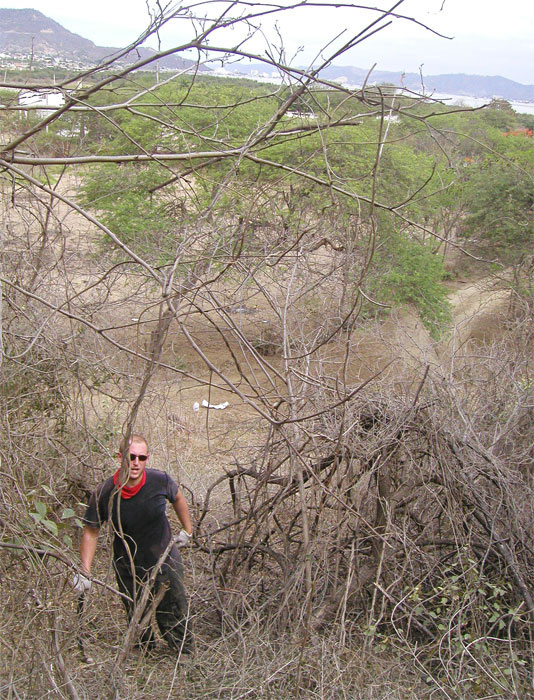Dec.12-29, 2009
Rains! Well, just about. It’s been drizzling and lightly raining on a somewhat consistent basis, mostly at the night, during the past couple weeks. Although it hasn’t rained enough to make the office/apartment roof leak (which doesn’t take all that much), there’s been enough to cause plants in the greenhouse to begin budding and show signs of new leafs and growth. Very soon we will begin moving trees to the revegetation sites.

In the meantime, we’re creating the spaces for the trees to be planted as quickly as possible. This involves finding local land owners who are interested in participating in the revegetation program. Personal references and inspection of the land owner’s treatment of the potential site help to ensure that the interested party genuinely desires to have trees planted on their property for the sake of ecosystem restoration instead of for commercial purposes (some of the tree species we work with are popular for hard-wood harvesting). If the land owner is willing to facilitate us by providing space along damaged hillsides for tree planting, assisting in water access during the dry season, and also possibly helping with transportation, then this would make a good partner for the program.

and Bahia in the distance. Rain clouds are rolling in.
Once the location of the site has been established, preparation work can be commenced. With the help of our team of volunteers, trails are cleared for access to the area in which we will plant trees. Trail clearing involves removing weeds, vines and very small shrubs. The trails follow the contours of the terrain and weave through existing vegetation.

At certain sites all of the pre-existing vegetation has been cleared and trail-making isn’t necessary, but this is rare. Most areas of land which are under heavy use have land owners who will continue to heavily (over) use them and are not interested in restoring habitat.

Most of the sites where we are interested in planting trees have at least several years worth of growth on them, often times they are overrun with pioneer species (shrubs, vines and brush) that will easily out-compete the slower growing trees that we are trying to plant. This makes trail clearing all the more important. At sites with little shade, vines and crawlers grow many magnitudes faster than our revegetation species.

After trails have been cleared, it’s time to dig holes. Holes are spaced 3-5 meters apart depending on the quality of the soil, steepness of the slope, and danger of erosion. The holes are also spaced around existing vegetation. Longer life species such as Algarrobo, Moyuyo and small Guayacans, which are common on many of the sites, will grow into what could make up a mature forest. As such, we make sure to work around (3-5 meters) these species. Shorter life species such as Frutillo and Aguia and small shrubs don’t effect hole spacing.

The holes are dug deep enough into the ground for a sapling contained in a three-liter cola bottle to be planted within a small depression which will serve for water collection later on. Each site contains hundreds of holes. The goal this year is to have 6-7 different sites with an average of 400-500 trees for a total of about 2,800 trees. So far this year we have prepared three full sites, each with between 300 and 400 trees. A fourth site is almost halfway done with approximately 200 hundred holes dug so far.

Work has been accomplished in bursts, depending on the available volunteers. Recently we’ve had as many as 10 volunteers in the field at once, but mostly we have been averaging 5-6. Once the rains get going we will be planting sites that are ready, as we continue to prepare more sites for planting. Getting trees in the ground as quickly as possible is critical for their survival because of the short rainy season characteristic of the Dry Tropical Forest (2-3 months long).

Last year was a particularly weak rainy season; it rained as many times as I can count on one hand. As a result we had a low survival rate and the trees barely grew at all. Those that survived are beginning to burst with new life. Guachepeli trees remained green almost the entire time (with the help of our routine watering). In contrast this year is forecast to have better rainfall.
There is talk (often times over exaggerated) of a more active El Niño year than usual. Hopefully this will result in a decent amount of rainfall over the course of several months (too much at any time would be bad as well because of possible mudslide problems). Fortunately current weather data shows that it will not be a disastrously heavy rainy season, such as in the year 1997-98 when it began raining in August and didn’t stop for a year.
Time will tell. We’ll be spending our days chopping trails and digging holes.
Pásalo bien,
Clay

Reader Interactions